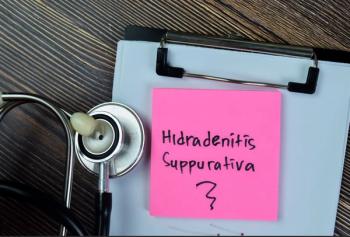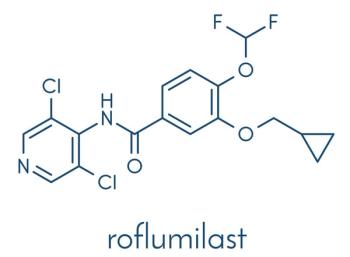
Comedonal Inflammatory Acne
New guidelines recommend benzoyl peroxide for most patients with comedonal acne and all patients with inflammatory acne-especially those who receive a topical or oral antibiotic as therapy, in whom it can prevent antibiotic resistance.
[[{"type":"media","view_mode":"media_crop","fid":"33935","attributes":{"alt":"Acne, comedonal and inflammatory","class":"media-image","height":"289","id":"media_crop_4663861334214","media_crop_h":"0","media_crop_image_style":"-1","media_crop_instance":"3596","media_crop_rotate":"0","media_crop_scale_h":"0","media_crop_scale_w":"0","media_crop_w":"0","media_crop_x":"0","media_crop_y":"0","title":"Comedonal, inflammatory acne","typeof":"foaf:Image","width":"408"}}]]
A 24-year-old man presents with acne. His acne started insidiously, with comedones and inflammatory papules, when he was a teenager. Three years later, it worsened, with the onset of deep, painful erythematous papules and nodules on the forehead, cheeks, and chin-some of which resolved with scars.
Prior treatment with clindamycin 1% lotion daily and short courses of doxycycline, 100 mg twice daily, for flares failed to control his disease. During the previous 4 years, the acne persisted despite rigorous use of the topical antibiotic and continued use of doxycycline.
Examination revealed open comedones on the nose and papules and nodules on the nose, cheeks, jawline, and neck. Depressed, atrophic scars of the cheeks and hypertrophic scars of the jawline and chest were noted (Figure).
The diagnosis was mixed comedonal and inflammatory acne with scarring.
Initial treatment consisted of a topical regimen of benzoyl peroxide, 10% gel in the morning, and tretinoin cream, 0.05% nightly. After 8 weeks, the inflammatory component decreased and the concentration of tretinoin cream was increased to 0.1%. His skin was clear 12 weeks later.
The pathogenesis of inflammatory acne centers on hyperkeratosis of the follicular epithelium, increased sebum production, proliferation of Propionibacterium acnes, and a pro-inflammatory cascade of cytokines, in part mediated by host responses to P acnes and its metabolic products.
The use of oral antibiotics for acne has skyrocketed over the past decades. Dermatologists, who account for fewer than 1% of physicians, write 5% of antibiotic prescriptions nationwide. Bacterial resistance to antibiotics has been on the rise among many classes of community- and hospital-acquired infections.
Benzoyl peroxide has been shown to prevent the development of resistance to antibiotics in patients with acne. New guidelines recommend benzoyl peroxide for most patients with comedonal acne and all patients with inflammatory acne, especially those who receive a topical or oral antibiotic as therapy.
Combination products including benzoyl peroxide and clindamycin increase patient compliance because of ease of application, although they are more expensive than separate products that contain a single component. Topical and oral antibiotics should not be used as combination therapy, since the risk of bacterial resistance increases when both are used synchronously.
Oral antibiotic therapy should last no more than 8 to 12 weeks: the intent should be reliance on topical therapy. Consider oral isotretinoin for all patients with scarring acne and for those with persistent inflammatory disease within several months of a course of oral antibiotics.
Newsletter
Enhance your clinical practice with the Patient Care newsletter, offering the latest evidence-based guidelines, diagnostic insights, and treatment strategies for primary care physicians.



















































































































































































































































































